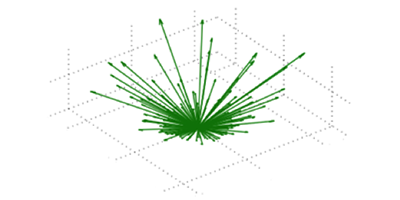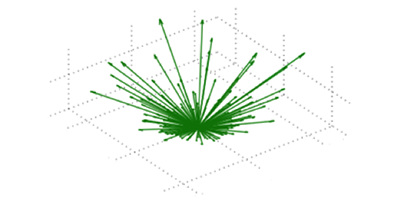Heat from Beats
A number of labs around the world employ large lasers to heat and compress small solid targets for research on high-density physics and controlled nuclear fusion. To impart enough energy uniformly onto the target, multiple overlapping laser beams are used. This offers new ways to control the laser-generated plasma but also adds complexity. For example, cross-beam energy transfer can occur, whereby the laser-plasma interaction shifts energy from one beam to another. If not properly controlled, this effect may degrade the symmetry of the energy delivery to the sample. In a paper in Physical Review Letters, the simulations by Pierre Michel at Lawrence Livermore National Laboratory, California, and colleagues show that the beating resulting from the interference of different laser frequencies can mitigate some of the problems of cross-beam transfer and strongly heat the plasma ions.
Michel et al. modeled the kind of experiment done at the National Ignition Facility at Livermore, in which beams enter a cavity (called a hohlraum) where they create x rays that hit a tiny pellet, causing it to implode and reach very high densities. In their simulations, the wavelengths of the beams are not identical, but adjusted in groups, resulting in beat waves. These, in turn, create electrostatic potentials that can push the ions around and heat the plasma. The authors calculated the time evolution of the ion velocity distribution and its effect on cross-beam transfer. They find that the energy is redistributed very quickly, predominantly through ion-ion collisions, and that saturation effects cause the cross-beam transfer to stabilize within nanoseconds. The analysis suggests that with proper control of the beat waves, input-laser energy losses would be reduced and the plasma could be more efficiently heated to temperatures upwards of million kelvin – David Voss





